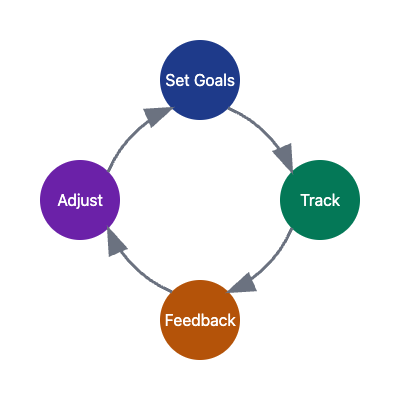Welcome to Defining and Tracking Project Success.
Success in project management isn’t just about finishing on time or within budget. It’s about delivering real value, keeping your team aligned, and making sure everyone knows what “success” actually means. When you set clear goals, track the right metrics, and create feedback loops, you give your team the clarity and confidence they need to deliver results — even when things get complicated.
In this course, you’ll learn how to:
- Define what success looks like for your project using specific metrics and deliverables, so your team stays focused on what matters most and progress is easy to measure.
- Leverage data and strategic problem-solving frameworks to guide decision making, reducing guesswork and increasing objectivity.
- Navigate ambiguity with confidence when requirements or priorities are unclear or shifting, so you can adapt quickly and keep the project moving forward.
- Address conflict and workflow disruptions with composure when responsibilities shift, helping your team stay productive and maintain momentum.
You’ll see practical examples and get a chance to practice these skills, so you can lead projects that stay on track and deliver meaningful outcomes. By the end of this lesson, you’ll be able to clearly define project success, select meaningful metrics, spot early warning signs, and set up feedback loops that keep your team aligned and your project on track.
The first step is to get specific about what you’re aiming for. That means identifying both the metrics and deliverables that matter most for your project’s goals.
The best metrics are clear, measurable, and directly linked to your project’s purpose. Ask yourself: If we hit this number or deliver this outcome, will we know we’ve succeeded?
But tracking progress isn’t just about looking at the finish line. You also need early warning signs, leading indicators, that tell you if things are starting to slip.
- Examples of leading indicators:
- Weekly completion rate of tasks dropping
- Customer feedback response time increasing
These signals help you spot potential issues early, so you can take action before they become major problems. By monitoring both your main metrics and these early indicators, you’ll be able to keep your project on course and respond quickly to challenges.
Note: Metrics and feedback loops aren’t one-size-fits-all. They can and should be adapted to fit the unique needs of your project and team. Whether you’re working on a software launch, a marketing campaign, an operations improvement, or any other type of project, the same principles apply: define what success looks like, choose meaningful ways to measure progress, and set up regular check-ins to keep everyone aligned. Tailor your approach to your specific context to make these tools as effective as possible.
To keep your project moving in the right direction, set up regular feedback loops. These make progress visible, surface blockers, and encourage continuous improvement.

A feedback loop is a simple cycle: you set goals and metrics, track progress, gather feedback, and make adjustments as needed — then repeat. This ongoing process helps your team stay aligned and responsive.
Here are some practical ways to create feedback loops:
- Weekly team check-ins (such as the project manager attending scrum meetings)
- Shared dashboards with up-to-date metrics
- Quick Friday polls: "What’s the biggest obstacle you faced this week?"
By gathering feedback regularly, you can spot issues early, address them quickly, and keep everyone focused on the same goals.
Here’s how a conversation about defining and tracking project success might sound:
- Jessica: Hey Chris, I think we need to be clearer about how we’ll measure the success of this new onboarding project. What do you think should be our main metric?
- Chris: Good point, Jessica. I’d say "Time to complete onboarding" is a strong candidate. If we can get new users set up in under 10 minutes, that’s a win.
- Jessica: I like that. Should we also track "User satisfaction score" from the post-onboarding survey?
- Chris: Absolutely. That’ll give us early warning if people are frustrated, even if they finish quickly.
- Jessica: Great. Let’s set up a weekly dashboard to review both metrics and send out a quick feedback poll every Friday.
- Chris: Sounds good. That way, we’ll spot issues early and can adjust before they become bigger problems.
Jessica and Chris define clear, measurable metrics, discuss leading indicators, and agree on a feedback loop to keep progress visible. This approach keeps everyone aligned and ready to respond to challenges.
You’ve learned how to define what project success looks like, select meaningful metrics and deliverables, and use leading indicators to spot issues early. You also know how to set up feedback loops that keep your team aligned and responsive. Next, you’ll put these skills into practice by discussing and justifying your choices with a stakeholder — getting hands-on experience with strategic project decision-making.
